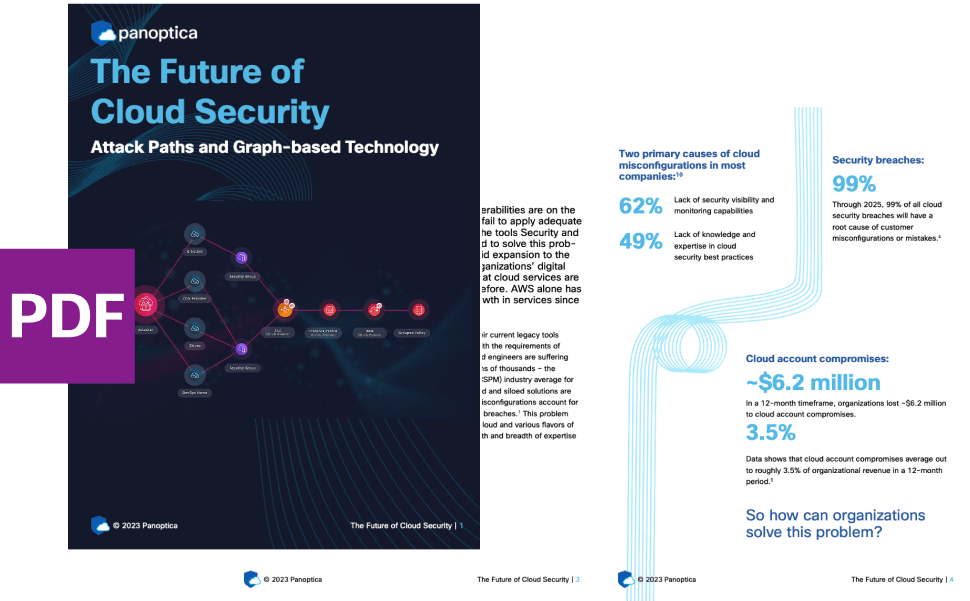INSIGHTS
7 min read

Published on 05/04/2022
Last updated on 04/18/2024
The ultimate cloud native security FAQ
Share
Do you have pressing questions about cloud native security that keep you up at night, but that you’re afraid to ask? Or, maybe you’re just curious to learn more about cloud native security and would love an FAQ that answers all your cloud native security questions?
Here’s what's going on in the world of cloud native application security and answers to the cloud native security questions we hear the most.
What is cloud native security and how does it work?
Cloud native security refers to securing cloud native applications, meaning those that run on distributed, loosely coupled architectures. It focuses on addressing the unique security risks of distributed, microservices-based environments.
Cloud native security includes:
- Container security: Containers, being a building block of cloud native applications, are essential to secure. Image scanning, vulnerability scanning, and runtime security monitoring help you keep tabs on the security of your containers.
- Microservices security: How do you usually build cloud native applications? One common answer is the microservices architecture: a series of small, independent services. Cloud native security often refers to how microservices like user authentication and payment gateways communicate with each other to enhance security.
How is cloud native security different from monolithic security?
The main difference is that cloud native applications are more complex than monolithic applications. This is because cloud native applications are more dynamic than monolithic applications.
Cloud native security also differs from monolithic security in that modules work independently of each other, meaning that if there is a security fault in one section it will not affect the entire application, as it would with monolithic architecture. Another key difference is that cloud native architecture presents an expanded attack surface. Securing a containerized application requires managing privileged access at image, container, node, pod, and namespace levels, ensuring encrypted tunneling from ingress to egress.
What is causing the massive growth of cloud native security?
Broad industry adoption of cloud native is one major driving factor. As of late 2021, about two-thirds of businesses said they were already cloud native or were planning to migrate to a cloud native strategy. At the same time, a surge of cloud native security threats has made the ability to secure cloud native applications even more important. As organizations adopt the cloud, key risks of cloud native environments continue to emerge
What are the main benefits of modern cloud native security?
Modern cloud native security tools are evolving quickly. As of 2024, tools have become less segmented; cloud native application protection platforms (CNAPPs) can now secure environments centrally, instead of requiring teams to juggle multiple tools (which increases the probability of security issues). Today’s cloud native application security solutions are also more resilient. They can remain online despite infrastructure outages, for example. They’re more automated, too, which helps DevOps save time and focus on security strategy.
What is a CNAPP?
A cloud native application protection platform, or CNAPP, is a solution that addresses multiple facets of cloud security – including cloud security posture management, cloud infrastructure entitlement management and cloud workload protection – via a single platform. This simplifies the overall security ecosystem.
What are the challenges facing cloud native security?
The top cloud native security risks, according to OWASP include:
- Broken access control: Access control ensures that users cannot act outside of their intended permissions.
- Cryptographic failures: How is data to be protected in transit and at rest?
- Injection: When attackers attempt to send data to an API that will change the commands being sent out
- Insecure design: Flaws or weaknesses in the architecture of the system that attackers look to exploit
- Security misconfiguration: Missing security hardening across parts of the API or improper configured permissions on cloud services
- Vulnerable and outdated components
- Identification and authentication failures: Ensuring an individual or entity is who they claim to be - Usually through the use of tokens or passwords
- Software and data integrity failures
- Security and logging failures
- Server side request forgery
What are some key areas within cloud native security?
The cloud native security domain can be broken down into subcategories like Kubernetes security, API security, microservices and cloud platform security. While all of these categories are interrelated, they involve different types of risks and require different security strategies.
How can you secure your cloud native applications?
Securing cloud native applications starts whle ensuring you have full visibility into your cloud environment, including what is running within it and where risks may lie. You should also continuously monitor for known vulnerabilities or misconfigurations that could enable a breach.
And you should take steps to continuously improve your overall security posture by reducing your attack surface wherever possible. This can be done using a platform such as Panoptica, which allows you to scan containers and pods for issues, enforce least privileges, enforce authentication and authorization policies, and more.
What are some main cloud native security platforms?
Public cloud vendors like AWS and Azure offer some cloud security tools. However, the most comprehensive solutions come from third-party providers, who offer CNAPP solutions that can work with any cloud and any type of cloud architecture.
What is open source software? And how is it different from enterprise software?
Open source software is software whose source code is publicly available, unlike enterprise software, whose source code is only available to the company that created it. From a security perspective, open source is more secure because the community at large can find and fix bugs. That said, attackers can also more easily discover security flaws in open source code, which is why it’s critical to know where open source is used within your organization and whether your code contains any known vulnerabilities. This can be done through API fuzzing and testing.
What are the main categories of cloud computing?
There are three main types of cloud computing services:
- SaaS, where applications are hosted on cloud infrastructure and delivered over the Internet.
- IaaS, which makes infrastructure like servers and storage available via the Internet.
- PaaS, which combines IaaS services with application development and deployment tools in a single platform.
There are also hybrid cloud services, which combine different types of cloud computing architectures to create unique environments.
What should you consider before investing in cloud native architecture?
The most important consideration is whether you have the engineering resources and expertise necessary to handle the increased complexity of cloud native environments. This will determine whether you are prepared to address the unique security risks in distributed cloud native environments.
Should you use GitOps for cloud native security?
GitOps, which uses Git to manage complex operations, is one way of simplifying cloud native security because it helps to automate complex workflows. That said, cloud native security requires much more than merely adopting a technique like GitOps. Read our guide to deploying GitOps for cloud native security.
What is Cisco doing when it comes to cloud native security?
Cisco is investing heavily in integrating cloud native security tools into its networking and firewall products. In addition, Cisco is helping to build next-generation solutions to secure cloud native environments like Kubernetes via platforms such as Panoptica. Finally, Cisco sponsors initiatives like ET&I, which does cutting-edge research on cloud native security challenges and solutions.
What is the Cloud Native Computing Foundation’s role in cloud native security?
The Cloud Native Computing Foundation, or CNCF, is a major sponsor of open source cloud native application and tool development. It also offers some guidance on best practices for cloud native security. However, the CNCF doesn’t focus on security specifically; its main mission is helping to develop cloud native software in general.
Where can I learn more about cloud native security?
A list of free and paid training resources on cloud native security is available from the CNCF.
You can also subscribe the The Shift, Outshift’s newsletter that keeps you at the forefront of cloud native modern applications, application security, generative AI, quantum computing, and other groundbreaking innovations that are shaping the future of technology.
Read more about how Outshift is pushing cloud native security to new frontiers.


Get emerging insights on emerging technology straight to your inbox.
Unlocking Multi-Cloud Security: Panoptica's Graph-Based Approach
Discover why security teams rely on Panoptica's graph-based technology to navigate and prioritize risks across multi-cloud landscapes, enhancing accuracy and resilience in safeguarding diverse ecosystems.

Related articles

The Shift keeps you at the forefront of cloud native modern applications, application security, generative AI, quantum computing, and other groundbreaking innovations that are shaping the future of technology.





